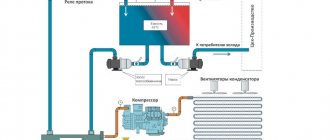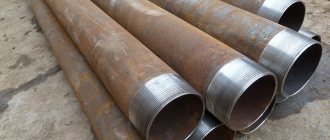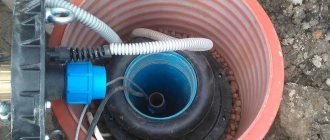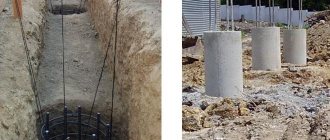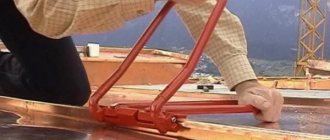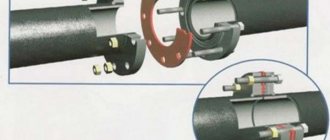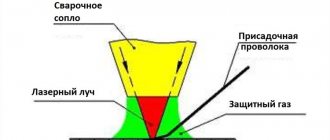In cases where the foundation for a future structure is being built in difficult soil conditions with a high risk of shifting, it is advisable to use bored piles with casing. This technology, which is recognized as one of the safest, is also used in cases where the future building is planned to be erected in an area characterized by dense buildings.
Bored pile foundation
The essence of technology
Casing pipes for bored piles (BPS), used in foundation construction, can differ in both their geometric parameters and design. The high reliability of foundation structures obtained using this technology is ensured by the fact that their basis, in addition to concrete, consists of frames for the manufacture of which metal reinforcement is used. The structure obtained using this method is not only securely fixed in the ground, but also itself demonstrates exceptionally high rigidity and stability.
Technological process for installing bored piles with casing
The technology for constructing bored piles is as follows:
- A well of the required diameter and depth approved by the project is drilled in a pre-selected location on the construction site, for which a special drilling rig is used.
- A casing pipe for piles is immersed into the resulting well. It is important that the depth to which such pipes are immersed is pre-calculated and approved by the project.
- The internal cavity of the pipe is freed from crumbled earth. To do this, various technical means are used (in particular, soil can be washed out of the pipe using water supplied under significant pressure).
- A reinforcement cage for a bored pile is lowered into the hole in the casing, cleared of crumbled earth.
- Concrete solution is poured into the internal cavity of the pipe, in which the reinforcement cage is placed. This process, in professional terms, is precisely called pile driving.
- After pouring the concrete, the casing pipes are removed from the ground section by section.
Naturally, the installation of bored piles is carried out using a technology that has a number of nuances. They must be taken into account during its practical implementation.
Recommendations for reducing the impact of method disadvantages
To prevent these shortcomings when applying the Kelly method, line personnel should be strictly required to comply with the provisions of technological maps , regulations, and work plans. In this case, defects and unproductive losses will be practically eliminated.
Do you need a technological map, regulations, PPR? Leave a request here
Today, unlike the 2000s, contractors cannot dictate their terms to customers, and are often forced to work under very strict price conditions. Therefore, the pace of work production is key; only high productivity can provide contractors with the opportunity to earn an acceptable income.
Therefore, it is important to properly prepare for the work:
— have serviced drilling rigs, prepared drilling tools, repaired casing pipes;
— assemble qualified, well-coordinated and motivated line personnel who trust the management of the drilling company;
— ensure the availability of design and initial permitting documentation, the scope of work, the readiness of the construction site, and the fulfillment of other conditions necessary for organizing rhythmic work;
— ensure the availability of the required number of reinforcement cages on the site, take control of the rhythmic supply of concrete mixture;
— organize fruitful interaction with representatives of the customer’s technical supervision on the issues of surveying critical structures, hidden work, and timely obtaining permits to perform certain technological operations.
Apply the Kelly Method to the construction of bored piles, build bigger and better, and earn income to develop more modern drilling technologies in construction.
Good luck to you, friends!
Advantages of bored piles
Among the many advantages of using BNS piles, several of the most significant can be identified, which include the following.
- The filling of such piles with concrete mortar is carried out quickly and efficiently.
- All stages of the technology for constructing bored piles are characterized by high safety for its performers.
- Thanks to the peculiarities of its construction technology, a cast-in-place pile is characterized by exceptionally high load-bearing capacity, resistance to mechanical loads and, accordingly, reliability.
- With the help of BNS piles, you can create reliable foundations even in weak and water-saturated soils.
- The use of this technology makes it possible to clearly monitor compliance with all requirements of design documentation, as well as accurately take into account the geological and engineering conditions in which this technological process is carried out.
- The technology under consideration makes it possible to extract large stones and boulders from the created well.
- When drilling wells using this technology, the soil is not subjected to vibration and dynamic loads.
- The turnover of the casing pipes used, which can be used repeatedly, is another important advantage of using this technology.
- All stages of the drilling operation can be controlled until the aquifer is reached.
- Complete protection of the walls of the well being created from soil collapse makes it possible to block dangerous horizons (such as quicksand).
- In wells produced using this technology, if the installation of bored piles involves the use of a reinforcement cage, there are no so-called necks, which significantly reduce the quality and reliability of the finished structure.
- The use of casing pipes for the installation of bored-type piles, as well as their further operation, is permitted in any climatic conditions.
Pouring the casing pipe with concrete solution
Criterias of choice
To arrange the casing, you must have the following information: well depth, volume of water supply, diameter of the submersible electric pump, and the choice is also greatly influenced by the consumer’s financial resources. To determine which pipe is best for a well, consider several options for well sources for water supply.
- For water intake using a submersible electric pump from a shallow well (up to 30 m) of the Abyssinian type, it is best to use a polymer pipeline made of uPVC. Depending on financial capabilities, choose thin-walled products with a threaded socket connection or thick-walled ones with versatile external and internal threads.
- For wells in sand up to 60 m deep, a good option is thick-walled uPVC; for further depths up to 100 m, you can consider various methods with double casing made of polymers. A good option is to use a rigid PVC-U pipeline on the outside, and an elastic and less load-resistant HDPE shell on the inside.
- For depths above 100 m, it is rational to use a rigid metal casing, inside of which an elastic HDPE or rigid PVC-U pipeline can be placed.
Rice. 14 Appearance of PVC-U pipes
- In any case, when choosing a single-pipe or double-pipe casing, the composition of the soil, geological factors, and groundwater levels should be taken into account. It wouldn’t hurt to listen to the feedback of highly qualified specialists on the issue of casing.
- When purchasing HDPE products, you should be careful because the retail chain sells recycled technical polyethylene and food-grade primary material. Their main easily distinguishable difference is the color: a pipe made from recycled granules usually has a dark blue or rich blue color, sometimes there is a green tint. HDPE products made from primary raw materials, in accordance with GOST, have a bright blue or light blue color.
- Another criterion for determining a low-quality HDPE product is the smell of plastic. Oon may resemble the aroma of confectionery products, detergents, washing powder, etc. - all this indicates that the material is made from recycled granules. Pure virgin polyethylene is odorless and can be used in drinking water systems without harm to human health, while polyethylene from recycled materials can be used in water intake systems for technical needs.
- When choosing the diameter of the column, they are guided by the flow rate (performance) of the source and the dimensional parameters of the electric pump; for large volumes of water intake, they try to increase the diameter of the casing. The pump is selected so that its diameter is not less than 5 mm of the internal diameter of the wellbore; if a soft HDPE pipeline is used or water intake is carried out at great depths, a larger internal diameter of the column is selected taking into account the deformation of the channel when compressed by soil.
- The quality of a PVC-U threaded connection is determined as follows: screw a pipe into another or its branch pipe three turns and then move one of the parts to the sides - a large gap indicates a weak fastening. Such a connection has low tightness, and if it is necessary to dismantle the casing and remove the string from the wellbore, the thread will most likely be torn off.
Rice. 15 Well filters and cone plug
The nuances of using casing pipes
The use of casing pipes allows you to avoid such a negative phenomenon as shedding of earth from the walls of the well being created. Due to this, pipes of this type are actively used not only to create foundation structures in industrial and civil construction, but also to strengthen the walls of gas, water and oil wells. The structure of casing pipes is made up of individual sections of such products, connected to each other by welding or using special clamping devices (such as “Kato”, “Betono”, etc.).
After the reinforcement cage used for installing bored piles is placed in the inside of the casing pipes and the concrete solution is poured, the pipes themselves are removed. In some cases, if stipulated by the requirements of the project, the technology allows leaving the casing pipes in place.
Installation of reinforcement cage inside the casing pipe
Modern manufacturers produce casing pipes of various diameters, which makes it possible to optimally select such products for constructing wells for various purposes. International regulatory documents that stipulate requirements for the geometric parameters of casing pipes are the Leffer and Bauer standards. According to the requirements of these standards, the internal diameters of casing pipes for bored piles can be in the range of 620–2500 mm, and the external diameters range from 640 to 2580 mm.
Various techniques are used to lower the casing into a pre-prepared well. The most common are:
- driving of casing pipes, for which special vibration equipment is used;
- immersion of casing pipes using drilling, which can be carried out using percussion or rotational techniques.
Rotating casing installation
The use of the rotational technique involves first drilling a hole in the ground for the first section of the pipe, for which all necessary measurements are first taken. After the first section of the casing pipe is immersed in the prepared well, its second section is drilled, while also focusing on the geometric parameters of the corresponding section. Thus, by performing step-by-step drilling and immersing interconnected sections of casing pipes, the entire pipe structure for the bored pile is installed.
The essence of the impact method for installing casing pipes is that sections of pipes are simply driven into the ground, for which special equipment is used. The settlement of pipes, carried out using this technology for installing bored piles, can be carried out ahead of or with some lag in relation to the face being performed. It all depends on the characteristics of the soil in which the well is drilled (in particular, on its permeability).
CONCRECTING A WELL
- Concreting of bored piles is carried out using the vertically moving pipe (VPT) method using plastic concrete of class *. Before starting concreting a lot, check the bottom of the well. If the depth of the well turns out to be less than that measured after completion of drilling, then use a bucket drill to additionally clean the bottom of the well.
- Preparing a well for concreting includes:
— measuring and recording the well bottom mark in the journal;
— preparation of slings for moving links of concrete and casing pipes;
— installation of the casing table (if necessary) with a crane on the casing pipe;
— assembly of concrete pipe links with an internal diameter of 245 mm. The bottom of the concrete pipe should be 30-50 cm above the bottom of the well. The joints of the concrete pipe links must be sealed.
- Begin concreting after filling the receiving funnel with concrete mixture.
- Breaks in concreting the pile, with the exception of technological breaks of up to 20-30 minutes, are not allowed, because lead to the formation of defects.
- After feeding the concrete mixture into the concrete pipe, measure the distance from the top of the casing to the concrete surface. If the distance from the bottom of the casing pipe to the surface of the concrete mixture is more than 8.0 m, then the upper element (4.0 m) of the casing pipe should be dismantled.
- When dismantling a concrete pipe, it must be taken into account that its lower end rises by the length of the elements being removed and also temporarily by 1.0 m (for two-meter elements). In this case, it is necessary that the lower end is constantly buried in the concrete mixture.
- When concreting the well is completed, it is necessary to remove the contaminated layer of concrete mixture. Measure the filling level and, if necessary, bring the top of the pile to the level of the design mark. In this case, it is allowed to use dosed feed from a concrete mixer truck.
- Emergency situations:
— when concreting is delayed, the casing string must be periodically rotated to avoid the pipe surface from sticking to the hardening material
concrete mixture;
- remove clogging of the concrete pipe by shaking it;
- if the blockage of the pipe is not eliminated, as well as if water breaks through
- concrete pipe through the bottom of the pipe due to its being pulled out of the concrete mixture, the concrete pipe should be removed and washed. Dismantle the column of casing pipe links remaining in the well or raise the casing table so that the level of the concrete mixture in the well is 2.0-2.5 m above the teeth of the knife bit. Then lower the drilling tool onto the surface of the concrete and drill it to a depth of 1.0 m. After this, lower the concrete pipe so that its bottom is 30 cm above the teeth of the knife bit, and then concrete the remaining part of the well.
- All operations for concreting a pile must be reflected in the “Concrete Work Log”, filled out at the construction site, as well as in the “Concealed Work Report”. The Contractor transfers them to the Customer upon delivery of the as-built documentation.
Areas of application of bored-type pile structures
It is impossible to answer the question of what bored piles are without listing their areas of application. Piles of this type are used for:
- erection of building structures in areas where the soil is prone to landslides;
- construction in areas characterized by high building density;
- carrying out construction work in areas with difficult geological conditions.
The use of bored piles in private housing construction
The use of pile structures, the walls of which are not additionally reinforced, is allowed in cases where the foundation is built in areas with rigid and hard soil, such as, for example, swelling-type clay soil. In addition, it is possible to install piles with unreinforced walls when their total length does not exceed 30 meters.
The technology for constructing bored-type piles is successfully used in cases where structures for various purposes are erected in places characterized by high seismic activity. In addition, bored pile structures are used to strengthen the foundations of already erected buildings, as well as to strengthen the soil in areas with a significant slope.
